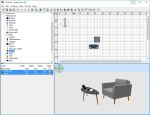- Home
- computer software
- Hyper-threading
What is hyper-threading technology?
Hyper-threading (HT) is a term used related with computer processor. It is one of the features built-in with most Intel made CPUs. Intel introduced this technology when it releases the first 3GHz Pentium 4 processor.
HT technology turns or simulates a single processor into two virtual processors so that it can handle two sets of instructions simultaneously. It is meant to increase the performance of a processor by utilizing the idle or non-used part of a processor. This enables a processor to perform tasks faster (usually 25% - 40% speed increase) than non-HT enabled processor.
Generally a single core processor appears as one processor for the OS and executes only one set of instruction at time. But, HT enabled single core processor appears as two processors to the OS and executes two application threads as a result.
For example, a dual core processor that supports HT will appear four core processors to the OS. A quad core processor that supports HT will appear as 8-core processor for the OS… etc.
Ok, let us go and see the essentials you need to benefit from HT…
Requirements of hyper-threading technology
HT technology requires the following fundamentals:-
- A processor built-in with HT technology
Not all processors support HT, therefore before purchasing a computer make sure that it supports HT Technology. You can easily identify HT enabled processor by checking its specification and CPU logo. Normally, Intel clearly puts tags on HT built-in processors.
Some of Intel family processors that support HT technology are Intel Atom, core processors, Xeon, Core i-series, Pentium 4 and Pentium mobile processors.
You will get more information about processors that support HT at Intel website
List of Intel processors that support HT Technology
- An operating system that supports HT
HT enabled single processor appears as two processors to the operating system. However, if the OS don’t support HT, you can’t benefit from this technology even though you have HT enabled processor. The OS must recognize that you have HT enabled processors so that it will schedule two threads or sets of instruction for processing.
Windows XP and later Operating systems are optimized for HT technology.
- HT compatible Chipset
- HT enabled system BIOS – you can easily enable/disable HT on system BIOS. Consult your system manual for this.
Benefits of Hyper-threading
- HT enabled processors performs better than non-HT processors as it is possible to run multiple applications at the same time. HT enabled computer cuts system unresponsiveness and increases application performance.
- Best for running multi-threaded applications. Currently, programmers are developing multi-threaded application to take the full advantages of HT and multi-core technology.
- Professionals who are involved in intensive applications such as creating and editing movies, photographs will benefit from HT Technology.
- Helps to have more secured and manageable system
Conclusion
Whether you want desktop or laptop computer, HT technology is available in most computer types including servers and workstations. However, you need to understand the above four requirements well when you buy a new system that supports HT.


